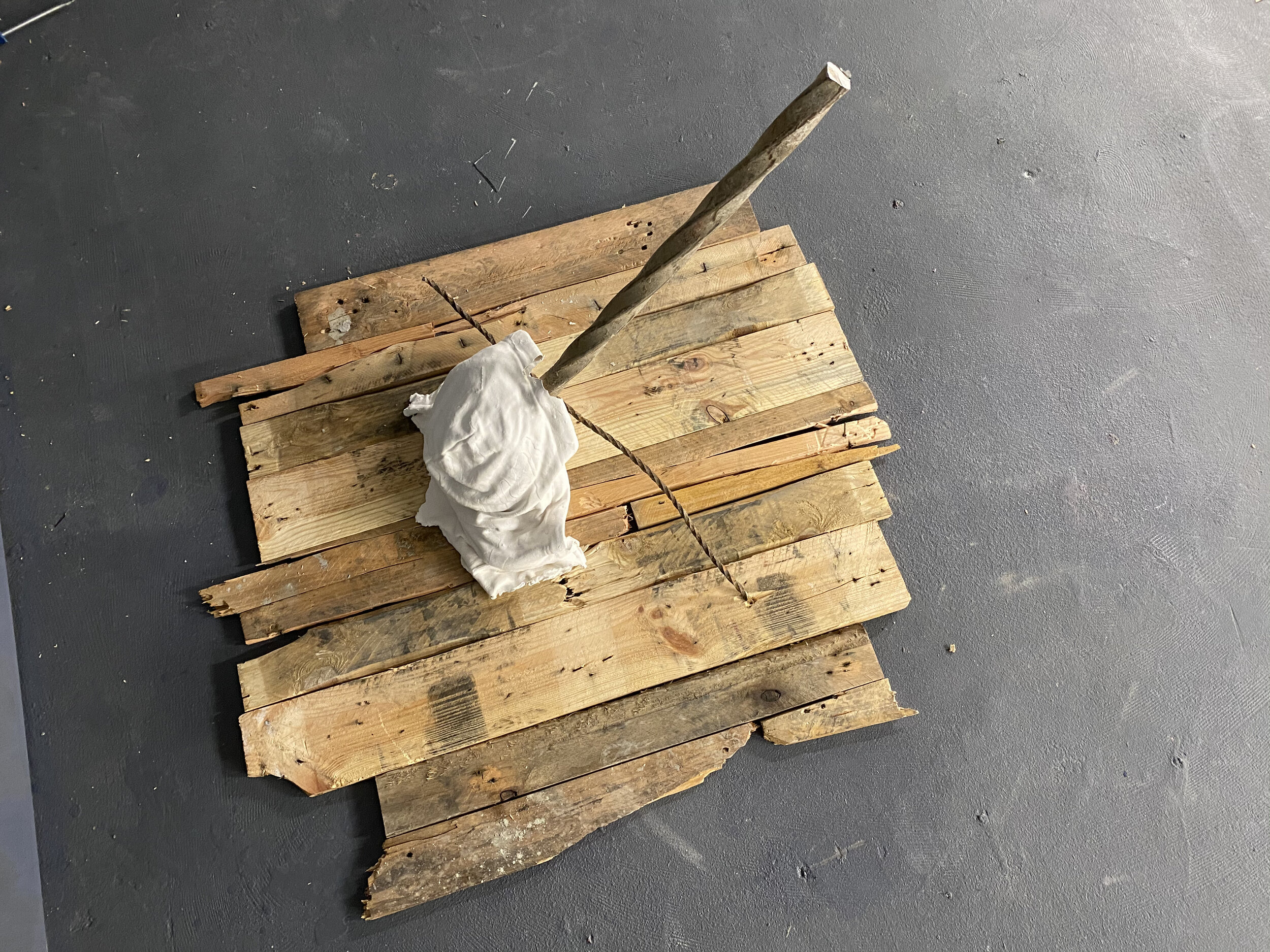Development: The Transience of Thought
Refresh page to reveal text
Thinking is one thing, sure, the descartian cogito, but there is something within the transience of such dialogue that leaves one exposed to nothing but conversations that exist only within. Everytime I try to harness what dwells within my head, there is a measure of influence from external, unfolding and temporal moments in time that go to making sense of the world around me problematic.
Fig. 1, Hoods on a Raft 2020.
What I am learning during the process of making, Is how I link my method of approach to my initial thinking.
In the process of arranging the objects above, Fig. 1 (‘Hoods on a Raft’ 2020) I feel like Grayson Perry being given access to the vaults of the British Museum. [2]
There is something about being in the studio space, whilst it’s empty. Just the objects and myself, becoming slowly and strangely familiar, but in a new setting. These works are from the L4 year.
During the process of making a separate, unconnected work, I was left with some broken streaks of wood that seemed to take on the essence of abandonment, or destruction. It is here now that I can recognize it isn’t always something that is planned that ends up as a artwork. Many of my ideas are produced from just being in the same room as the materials. Its like theres a subconscious plan to ‘find out how all these bits go together.’
My intention whilst in the studio space, was originally, to see how the sculptural hoods that I had made from the end of the first year, would look in differing settings within the university space. Differing floors of the Annex building have differing feels. What was evident, was that Covid-19 has drastically affected how the building would be utilised under more normal circumstances.
This has presented an opportunity to spend long periods of time alone within the space. I find that this has allowed me to feel a sense of ownership to each floor I tried taking my work too, so as to see what kind of engagement and interaction the spaces evoked during the habitation process of marrying the object and environment together.
Because of this open ended approach to engaging with the Hoods and where they are housed, looked at and perceived I found that I am present when an idea or should I say more, ‘response’ to the space happens. For example, the slight and subtle sense of danger from the broken, splintered and jagged bits of wood that I had lying around, were the result of breaking down a wooden pallet found on the street next to the university.
What is intriguing here, are the ‘accidental properties’ [1] of the layout. It’s hard not to be making work at the moment and not be influenced by schools of thought that overlap from CCS. One of the obvious ways that this overlap of philosophical direction within my work makes itself evident, is how I consider the ontological essences within the work. These hoods obviously have anthropomorphic qualities that within themselves, produce an essence of being. Yet within the setting of the studio space, what other qualities present themselves as evidence of being? The hope is to challenge and develop within my work a more ontological questioning of being, and seek out a setting that challenges the viewers understanding of meaning within the object - person relationship.
[1] Robertson Ishii, Teresa and Philip Atkins, "Essential vs. Accidental Properties", The Stanford Encyclopedia of Philosophy (Winter 2020 Edition), Edward N. Zalta (ed.), URL = <https://plato.stanford.edu/archives/win2020/entries/essential-accidental/>.
[2] Grayson Perry, ‘Tomb of the Unknown Craftsman’, British Museum Blog, <https://www.britishmuseum.org/exhibitions/grayson-perry-tomb-unknown-craftsman> [accessed 11/12/2020]











